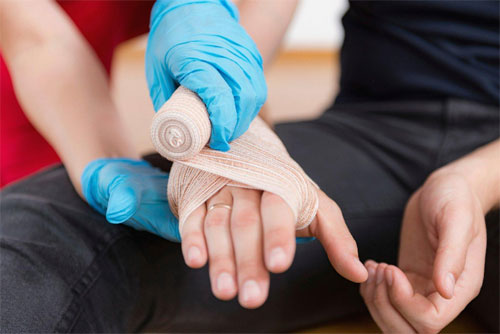Introduction
In times of emergency, the capability to perform Cardiopulmonary Resuscitation (CPR) can be the distinction in between life Helpful hints and death. In Australia, understanding the CPR qualification requirements is necessary for anyone desiring to come to be a licensed rescuer. This thorough overview will certainly delve into what you need to find out about CPR accreditation in Australia, including training choices, credibility of certificates, age-specific guidelines, and more.
CPR Certification Needs in Australia: What You Required to Know
What is CPR?
Cardiopulmonary Resuscitation (MOUTH-TO-MOUTH RESUSCITATION) is an emergency treatment performed when a person's heart quits defeating or they quit breathing. It integrates chest compressions with rescue breaths to maintain blood flow and oxygenation up until professional clinical aid arrives.
Why is mouth-to-mouth resuscitation Important?
The critical importance of mouth-to-mouth resuscitation can not be overstated-- it saves lives. According to statistics from the Australian Resuscitation Council, prompt mouth-to-mouth resuscitation can increase or triple a sufferer's chance of survival after heart attack.
Understanding CPR Certification
To end up being accredited in CPR, individuals have to undergo training via acknowledged companies. Certifications normally include hands-on skills practice and theoretical expertise about heart emergencies.
Types of mouth-to-mouth resuscitation Training Available
Basic Life Assistance (BLS) vs. Advanced Life Support (ALS)
- Basic Life Support (BLS) concentrates on essential techniques including chest compressions and rescue breaths. Advanced Life Assistance (ALS) covers more complex procedures such as sophisticated airway administration and drug administration.
Online vs. In-Person Training
- Online mouth-to-mouth resuscitation certification deals flexibility yet may lack hands-on experience. In-person courses offer practical abilities technique vital for effective action in emergencies.
CPR Certification Process
Choosing a Training Provider
When looking for training, make sure that your selected supplier is approved by reputable companies like the Australian Resuscitation Council or St John Ambulance.
Course Period and Content
Most basic training courses last about 4 hours and cover:
- Adult CPR techniques Use of Automated External Defibrillators (AED) Recognition of heart attack signs
CPR Certification Validity
How Lengthy Does a Mouth-to-mouth Resuscitation Certificate Last?
Typically, a CPR certificate continues to be valid for three years before requiring renewal. It is vital to stay updated with the current methods and guidelines.
Renewing Your Certification
Renewal frequently involves taking a refresher course that takes another look at crucial abilities and updates participants on any kind of modifications in guidelines.
Age-Specific mouth-to-mouth resuscitation Guidelines Australia
Adult vs. Youngster vs. Infant mouth-to-mouth resuscitation Techniques
Different age need tailored techniques:
- For adults, concentrate on compression depth and rate. For youngsters, adjust compression depth based upon size. Infant mouth-to-mouth resuscitation technique entails gentle compressions and careful ventilation.
Infographic: Age-Specific Techniques
|Age Group|Compression Deepness|Ratio|| -----------|-------------------|-------|| Grownups|5-6 centimeters|30:2|| Youngsters|4-5 centimeters|30:2|| Infants|1.5 centimeters|30:2|

CPR Devices in Australia
Essential Equipment for Reliable Response
Having access to correct CPR equipment aids effective resuscitation efforts:
AEDs Pocket masks GlovesUsing AED with mouth-to-mouth resuscitation in Australia
An Automated External Defibrillator can dramatically enhance survival prices when utilized along with CPR-- knowing how to make use of an AED properly is crucial for every rescuer.
First Aid Course in Port Macquarie
Common Myths About CPR
The Misconception of "Mouth-to-mouth Resuscitation Always Restarts Heart"
Many believe that executing CPR will certainly always reactivate a heart; nevertheless, this is deceptive-- mouth-to-mouth resuscitation keeps blood circulation until expert aid arrives but does not ensure revival.
Debunking Various other Misconceptions
Other misconceptions include misunderstanding compression deepness or the performance of rescue breaths versus hands-only techniques; education plays a critical duty in dispelling these falsehoods.
Special Scenarios in Doing CPR
CPR for Sinking Victims
Drowning sufferers frequently require instant rescue breaths as a result of their unique conditions; recognizing this context improves results significantly.
Sports-Related Cardiac Arrest Procedures
Recognizing indications certain to professional athletes aids -responders act rapidly-- education pertaining to sports-related cardiac incidents is critical for trains and trainers alike.
Workplace Emergency situation Plans
Establishing Readiness at Workplaces
Every workplace should have a thorough emergency plan that consists of provision for emergency treatment training like cpr and emergency treatment combo programs for employees.

Training Workers Effectively
Regular training sessions ensure staff are prepared-- not only does this secure employees but additionally enhances general work environment safety and security culture.
Frequently Asked Questions (Frequently asked questions)
Q1: How do I discover local CPR classes?
A1: Regional recreation center or healthcare facilities frequently supply courses; websites of companies like St John Rescue give listings as well.
Q2: Can I obtain my qualification online?
A2: Yes! Numerous accredited organizations provide online cpr certification, but ensure it consists of hands-on technique aspects as well.
Q3: Is there a distinction in between adult and child certifications?
A3: Yes! Training courses particularly customized for infants and youngsters focus on age-specific methods which vary from those shown for adults.
Q4: Just how commonly must I renew my certification?
A4: Generally every 3 years; nevertheless, remaining updated every year with refreshers is extremely suggested offered progressing guidelines.
Q5: Are there any kind of particular regulations regarding required training?
A5: While policies may differ by state or area, many offices are required by law to have trained initial responders offered on-site throughout functioning hours.
Q6: What stats sustain the effectiveness of CPR?
A6: Research studies show that immediate bystander-administered mouth-to-mouth resuscitation can raise survival prices from cardiac arrest significantly-- often increasing chances of patient recuperation compared to no treatment at all.
Conclusion
Understanding the ins and outs of the CPR qualification requirements in Australia equips people across various markets-- from healthcare professionals to daily residents-- to act decisively throughout emergencies. With correct training, recognition of age-specific guidelines, understanding about tools such as AEDs, and familiarity with typical misconceptions bordering resuscitation initiatives, one can genuinely make a distinction when it matters most. Whether you're thinking about enlisting in neighborhood courses or checking out on-line options like online mouth-to-mouth resuscitation certification, remember that each action taken in the direction of ending up being qualified adds towards saving lives-- an honorable pursuit indeed!